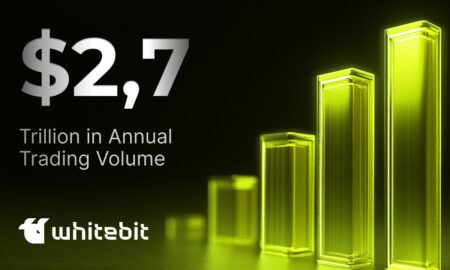The extent to which the EOS platform is centralized is causing great debate within the crypto community. Yesterday, Ethereum founder Vitalik Buterin weighed in on the issue – prompting an interesting response from EOS CTO Daniel Larimer. Their Twitter thread highlights an important question: “How do you define Centralization?”
EOS Centralization?
In order to solve scalability problems associated with PoW (Proof of Work) blockchains, EOS uses a delegated proof-of-stake (DPoS) consensus mechanism, where token-holders vote to elect 21 Block Producers (BPs) who are responsible for validating transactions and maintaining the network.
With the EOS mainnet going live earlier in the month – and users successfully electing 21 BPs – this ostensibly centralizing facet of the $4bn platform’s governance has drawn criticism from many within the crypto community.
Offering his perspective on the issue in an interview with Fred Wang on his Chinese Ten Questions show, Vitalik Buterin compared the system to traditional forms of political organization:
“It's not just a technical experiment; it's also a political science experiment, as they are attempting to create a kind of digital government in cyberspace on their blockchain, with a constitution, an executive branch (the 21 delegate nodes), a judicial branch (arbitrators), etc.”
Buterin is critical of this kind of governance model – pointing out the inherent risks of such a delegated system:
“EOS already froze 7 accounts, and very quickly without warning; this can certainly help people recover from theft and scams, but it poses challenges. What happens when you try to build an application on EOS, which the EOS establishment does not like?”
Seen as exemplifying the critics’ problems, the incident he is referring to sparked a great deal of controversy when the 21 EOS block producers were ordered by the EOS Core Arbitration Forum (ECAF) to freeze 27 accounts – for reasons to “be posted at a later date.”
Different kinds of ‘Centralization’
EOS CTO Daniel Larimer, however, was quick to fire back at Ethereum yesterday on Twitter, pointing out that Ethereum itself could be seen as being even more centralized:
3 of 5 parties are able to freeze Ethereum accounts by vote (https://t.co/NMcSZ6UaWR) simply by rejecting transactions and blocks that include transactions. Under the Ethereum agreement, an arbitration order from ICC can compel them to. It takes 21 of 21 parties on EOS.
— Daniel Larimer (@bytemaster7) June 24, 2018
What is important to note however is that not all centralization is identical. With Ethereum, the actors in question are mining pools – not block producers.
It may be true that in theory several of the five largest mining pools could decide to usurp the network – but mining pools comprise thousands of users operating individual nodes. Mining pools are ultimately answerable to their users: not only will it seldom be in their interests to ignore the wishes of their individual users, but in the event of any bad behaviour from the pools – they can simply leave.
Block producers on the other hand are individuals – and although they are continuously elected – the voting is far more susceptible to whales controlling the votes and thus controlling the block producers: the top holders own a huge percentage of the supply – so voting can be controlled by a tiny minority of users (See Image Below). Twitter user Dmitry Palchun points out:
ETH-pools use hashpower of 1000s of simple nodes, which can leave immediately if the pool misbehave and join/create another pool. BPs get elected ongoing but voting result is controlled by whales. You can not start a BP on your own without whales allowance.
— Dmitry Palchun (@Ethernian) June 24, 2018
Larimer argues that the EOS platform has pre-empted the inevitable dispute problems that will arise on any blockchain – claiming that “Wise men plan for civilized dispute resolution before it happens.”
While there can be no doubt that any kind of consensus mechanism will have to deal with disputes – the comparison between Ethereum and EOS seems unreasonable.
In theory it is possible for both EOS and Ethereum to be manipulated. But the degree of collusion required for manipulating Ethereum would have to be far greater: it would require the biggest mining pools to corral the support of a majority of their hashpower, and then at least three of the large pools to agree to an action together.
EOS in contrast, would only require the individual block producers to agree. While it is possible for EOS voters in theory to act together to remove malicious BPs, it seems improbable that such an effort could be co-ordinated effectively because EOS is enormously centralized: the top 1.6% of holders own 90% of the supply, and so have phenomenal voting power.

Returning to the political comparison – EOS might be best compared to an aristocracy or oligarchy (as argued yesterday) – where power is concentrated in the hands of a wealthy elite. Ethereum on the other hand, is more analogous to a democracy – which, although flawed – grants individuals more control.
As history has shown, democracies can be corruptible – but there is a reason we moved on from aristocracies.









